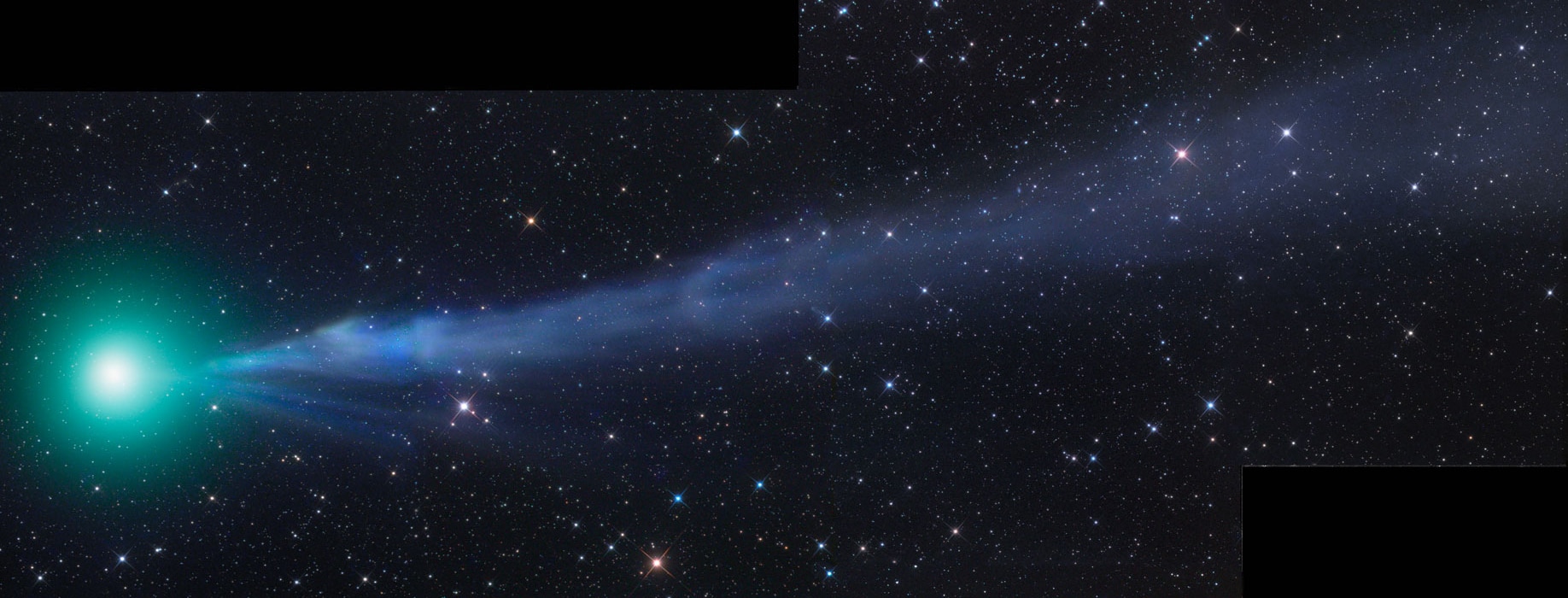Create a free profile to get unlimited access to exclusive videos, sweepstakes, and more!
Comet Lovejoy, Because Holy Wow

Seriously, are you kidding me with this photograph of the comet Lovejoy?
It was taken by Gerald Rhemann on Dec. 23, 2014, in Namibia (a photo he took the night before was featured in my earlier post about how to see the comet). It’s a four-panel mosaic made up of individual images taken with a 30-centimeter-wide field telescope, each with a total exposure of about 20 minutes. Lovejoy is currently sidling up past Orion and isn’t too hard to spot with binoculars.
Comets are essentially piles of rock, gravel, and dust held together by various kinds of ice (in general, water and carbon dioxide ice). As they near the Sun, the ice turns into a gas and blows away due to pressure from the solar wind and sunlight itself. This also releases a lot of dust and gravelly bits, which tend to follow the comet around the Sun—if the Earth’s orbit intersects this material, we get annual meteor showers.
That doesn’t happen with C/2014 Q2 (Lovejoy), though. But it still puts on quite a show! As I alluded to in that earlier post, the comet is green due to the presence of diatomic carbon (C2). Sunlight energizes the molecule and makes it glow. I haven’t seen a good spectrum of Lovejoy yet, but I suspect the blue in the tail is from carbon monoxide emission. C2 also emits in the blue, but I can’t say for sure how much of the color is from which molecule.
I’ll take a moment here to reiterate something I’ve written about before as well: A lot of articles say the green color in a comet is from cyanogen (the molecule (CN)2). While the origin of this idea isn’t clear, it’s not true. Cyanogen emits in the violet, almost UV part of the spectrum, and very weakly in the blue. But it doesn’t emit any green light at all! I’ve made this error before as well, and it’s perniciously difficult to get rid of; it gets spread around like a virus. I hope I can help clear it up here though.
Anyway, Lovejoy is still getting brighter every day and heading north in the sky, making it easier and easier to see for those of us above the Equator. The Moon is full on Sunday, Jan. 4, which will light up the sky and make finding the comet harder. But two or three days later the Moon will rise late enough to make viewing better.
You’ll almost certainly need binoculars to see it, but if you have dark skies it shouldn’t be too hard. Use the maps at Sky and Telescope to locate it, and don’t forget the Virtual Telescope project will have live online viewings on Jan. 6 and 11.
I hope you get a chance to take a look. Bright comets don’t come along that often, and this one is, obviously, quite lovely.



























